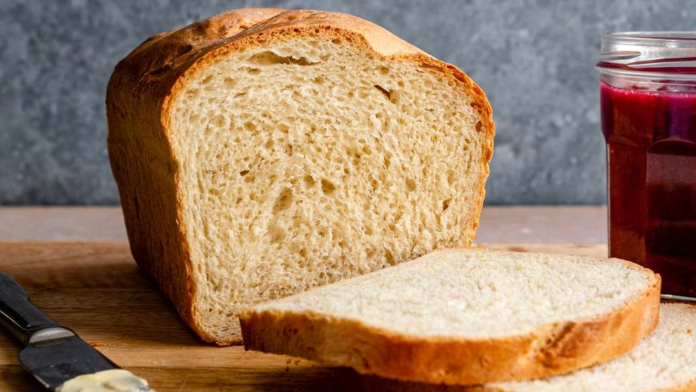Bread is a staple food in many parts of the world, and for good reason. It’s a versatile food that can be enjoyed in various forms and with different toppings. However, bread can also be a culprit in causing weight gain and triggering cravings. Bread is a carbohydrate-rich food, and consuming it can cause spikes in blood sugar levels that can lead to cravings for more bread and other high-carbohydrate foods. In this article, we will explore the reasons why bread can trigger cravings and cause weight gain, as well as ways to manage these effects.
Understanding Bread and its Nutritional Content:
Bread is made from grains such as wheat, rye, barley, and corn. These grains are ground into flour and combined with other ingredients such as water, yeast, salt, and sugar to create different types of bread. Bread can be categorized into two main types: white bread and whole-grain bread.
White bread is made from refined flour, which means that the bran and germ are removed during the milling process. This results in a bread that is lower in fiber and nutrients such as vitamins and minerals. Whole-grain bread, on the other hand, is made from flour that contains the bran and germ of the grain. This type of bread is higher in fiber and nutrients compared to white bread.
Bread is also a source of carbohydrates, which are the body’s primary source of energy. Carbohydrates are broken down into glucose, which is used by the body for energy. However, consuming too many carbohydrates can cause spikes in blood sugar levels, which can lead to cravings and weight gain.
Why Bread Triggers Cravings and Causes Weight Gain:
A. Bread and its Effect on Blood Sugar Levels:
When we consume carbohydrates, they are broken down into glucose, which enters the bloodstream. The body then releases insulin, a hormone that helps to regulate blood sugar levels by moving glucose into cells where it can be used for energy or stored as fat. However, consuming too many carbohydrates can cause the body to release too much insulin, which can lead to a rapid drop in blood sugar levels. This can cause cravings for more carbohydrates, including bread.
B. Bread and its Effect on the Brain:
Bread can also have an effect on the brain, specifically the release of neurotransmitters such as dopamine and serotonin. These neurotransmitters are responsible for regulating mood, and consuming carbohydrates can increase their production. This can lead to feelings of pleasure and satisfaction, which can cause cravings for more bread and other carbohydrate-rich foods.
C. Bread and its Effect on the Gut Microbiome:
The gut microbiome is a collection of bacteria that live in the digestive tract. These bacteria play an important role in maintaining digestive health and overall health. However, consuming too many carbohydrates can lead to an imbalance in the gut microbiome, specifically an overgrowth of harmful bacteria. This can lead to inflammation and other health issues, including weight gain.
How to Control Bread Cravings and Manage Weight
A. Choosing the Right Type of Bread
The type of bread you choose can make a big difference in managing your weight. Whole-grain bread is an excellent choice because it is high in fiber, which helps you feel full and satisfied. Fiber also slows down digestion, which can help prevent blood sugar spikes and crashes that lead to cravings for more food.
In contrast, white bread is made from refined grains, which have been stripped of their fiber and nutrients. This means that white bread is digested quickly, causing blood sugar spikes that can trigger cravings and overeating.
B. Controlling Portion Sizes
Portion control is critical when it comes to managing your weight, and bread is no exception. While bread is a healthy part of a balanced diet, it is easy to overdo it and consume too many calories. To avoid this, it is essential to be mindful of your portions.
A standard serving size for bread is one slice, which typically contains around 100 calories. Try to stick to this serving size, and avoid going back for seconds or thirds. If you find that you are still hungry after one slice, try pairing it with a protein or fiber-rich food to help you feel more full.
C. Combining Bread with Protein and Fiber-Rich Foods
Pairing bread with protein and fiber-rich foods can also help you manage your weight and control cravings. Protein is essential for building and repairing tissues in the body, and it also helps you feel full and satisfied. Fiber, as mentioned earlier, helps slow down digestion and prevent blood sugar spikes.
To balance out your bread intake, try pairing it with foods such as lean meats, fish, beans, and vegetables. For example, you could have a turkey sandwich on whole-grain bread with lettuce, tomato, and avocado. This combination will give you a balance of carbohydrates, protein, and fiber, and help you feel satisfied for longer.
D. Incorporating Physical Activity
Regular physical activity is essential for maintaining a healthy weight and preventing weight gain. Exercise not only burns calories, but it also helps reduce stress and improve mood, which can help prevent emotional eating and cravings.
Try to incorporate physical activity into your daily routine, even if it is just a brisk walk or a few minutes of stretching. As you become more comfortable with exercise, you can increase the intensity and duration of your workouts to help burn even more calories.
Bread can be a healthy part of a balanced diet, but it can also trigger cravings and lead to weight gain if not consumed in moderation. By choosing the right type of bread, controlling portion sizes, pairing it with protein and fiber-rich foods, and incorporating physical activity into your routine, you can manage your bread cravings and maintain a healthy weight. Remember to be mindful of your eating habits and make small, sustainable changes over time to see the best results.





